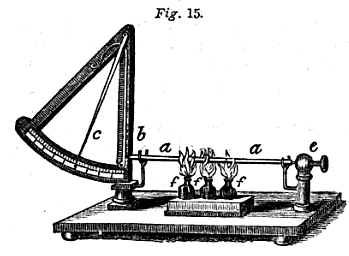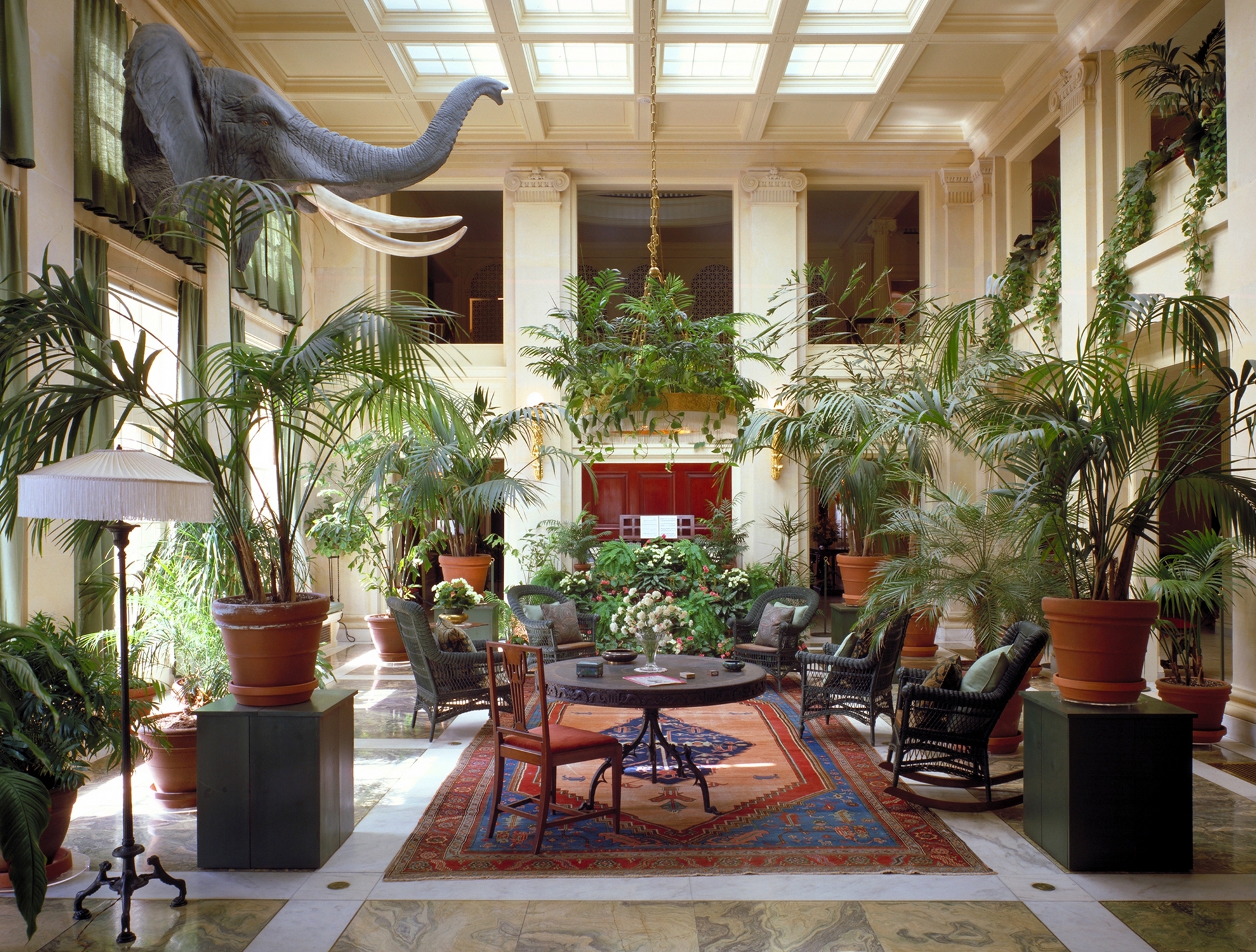|
Jules Richard (photographer)
Jules Richard (19 December 1848 - 18 June 1930) was a French photographer, businessman and instrument maker. Trained in part by his father, an instrument maker, Richard took over the family's business on his father's death. Richard was the inventor and manufacturer of the Verascope and Glyphoscope stereographic cameras, and also the Taxiphote stereographic viewer. Early career Richard's father Félix Richard was an instrument maker in Paris; his uncle was the electrical instrument maker Paul-Gustave Froment. After training in the his father's workshop, he worked outside the family company in the 1870s, manufacturing telegraphy equipment. Following his father's death in 1876, he returned to the family business in 1877, working in partnership with his younger brother Max starting in 1882. During the 1880s they built a reputation for manufacturing scientific barometers, and other environmental recording devices such as anemometers, pyrometers, aneroid barographs and dynamometers. ... [...More Info...] [...Related Items...] OR: [Wikipedia] [Google] [Baidu] |
Paul-Gustave Froment
Paul-Gustave Froment (born March 3, 1815 in Paris, died 1865) was a French mechanic, instrument maker and inventor. Life He was born in Paris and was educated at the Collège Sainte-Barbe and the Lycée Louis-le-Grand. Having demonstrated from childhood talent for technology, his father decided to let him study at the Ecole Polytechnique in Paris. He later moved to Britain to continue his studies in Manchester. He was also one of the earliest photographers, working with the Direct Positive Process. On his return to France, his intention was to build steam engines but he was prevented from doing so by lack of funds. Instead, he opened a Paris workshop in 1844 where, among other things, he worked on a telegraph with written and keyboard signals, improved Gaetan Bonelli's electric loom, and helped William Hughes improve his early typewriter. He also worked on the gyroscope with Léon Foucault, for whom he also made the pendulum for his famous demonstration in 1851. In 1854 h ... [...More Info...] [...Related Items...] OR: [Wikipedia] [Google] [Baidu] |
Anemometer
In meteorology, an anemometer () is a device that measures wind speed and direction. It is a common instrument used in weather stations. The earliest known description of an anemometer was by Italian architect and author Leon Battista Alberti (1404–1472) in 1450. History The anemometer has changed little since its development in the 15th century. Alberti is said to have invented it around 1450. In the ensuing centuries numerous others, including Robert Hooke (1635–1703), developed their own versions, with some mistakenly credited as its inventor. In 1846, John Thomas Romney Robinson (1792–1882) improved the design by using four hemispherical cups and mechanical wheels. In 1926, Canadian meteorologist John Patterson (1872–1956) developed a three-cup anemometer, which was improved by Brevoort and Joiner in 1935. In 1991, Derek Weston added the ability to measure wind direction. In 1994, Andreas Pflitsch developed the sonic anemometer. Velocity anemometers Cup anemomet ... [...More Info...] [...Related Items...] OR: [Wikipedia] [Google] [Baidu] |
Pyrometer
A pyrometer is a type of remote-sensing thermometer used to measure the temperature of distant objects. Various forms of pyrometers have historically existed. In the modern usage, it is a device that from a distance determines the temperature of a surface from the amount of the thermal radiation it emits, a process known as pyrometry and sometimes radiometry. The word pyrometer comes from the Greek word for fire, "πῦρ" (''pyr''), and ''meter'', meaning to measure. The word pyrometer was originally coined to denote a device capable of measuring the temperature of an object by its incandescence, visible light emitted by a body which is at least red-hot. Modern pyrometers or infrared thermometers also measure the temperature of cooler objects, down to room temperature, by detecting their infrared radiation flux. Principle It is based on the principle that the intensity of light received by the observer depends upon distance of observer from source and temperature of dis ... [...More Info...] [...Related Items...] OR: [Wikipedia] [Google] [Baidu] |
Barograph
A barograph is a barometer that records the barometric pressure over time in graphical form. This instrument is also used to make a continuous recording of atmospheric pressure. The pressure-sensitive element, a partially evacuated metal cylinder, is linked to a pen arm in such a way that the vertical displacement of the pen is proportional to the changes in the atmospheric pressure. Development Alexander Cumming, a watchmaker and mechanic, has a claim to having made the first effective recording barograph in the 1760s using an aneroid cell.Gloria Clifton (2004)"Cumming, Alexander (1731/2–1814)", ''Oxford Dictionary of National Biography'', Oxford University Press. (Subscription or UK public library membership required) Cumming created a series of barometrical clocks, including one for King George III. However, this type of design fell out of favour. Since the amount of movement that can be generated by a single aneroid is minuscule, up to seven aneroids (so called Vidie-cans ... [...More Info...] [...Related Items...] OR: [Wikipedia] [Google] [Baidu] |
Stereographic
Stereoscopy (also called stereoscopics, or stereo imaging) is a technique for creating or enhancing the illusion of depth in an image by means of stereopsis for binocular vision. The word ''stereoscopy'' derives . Any stereoscopic image is called a stereogram. Originally, stereogram referred to a pair of stereo images which could be viewed using a stereoscope. Most stereoscopic methods present a pair of two-dimensional images to the viewer. The left image is presented to the left eye and the right image is presented to the right eye. When viewed, the human brain perceives the images as a single 3D view, giving the viewer the perception of 3D depth. However, the 3D effect lacks proper focal depth, which gives rise to the Vergence-Accommodation Conflict. Stereoscopy is distinguished from other types of 3D displays that display an image in three full dimensions, allowing the observer to increase information about the 3-dimensional objects being displayed by head and eye move ... [...More Info...] [...Related Items...] OR: [Wikipedia] [Google] [Baidu] |
Museum Of Fine Arts Houston
The Museum of Fine Arts, Houston (MFAH), is an art museum located in the Houston Museum District of Houston, Texas. With the recent completion of an eight-year campus redevelopment project, including the opening of the Nancy and Rich Kinder Building in 2020, it is the 12th largest art museum in the world based on square feet of gallery space. The permanent collection of the museum spans more than 6,000 years of history with approximately 70,000 works from six continents. Facilities The MFAH's permanent collection totals nearly 70,000 pieces in over of exhibition space, placing it among the larger art museums in the United States. The museum's collections and programs are housed in nine facilities. The Susan and Fayez S. Sarofim Campus encompasses 14 acres including seven of the facilities, with two additional facilities, Bayou Bend and Rienzi ( house museums) at off site locations. The main public collections and exhibitions are in the Law, Beck, and Kinder buildings. The ... [...More Info...] [...Related Items...] OR: [Wikipedia] [Google] [Baidu] |
George Eastman Museum
The George Eastman Museum, also referred to as ''George Eastman House, International Museum of Photography and Film'', the world's oldest museum dedicated to photography and one of the world's oldest film archives, opened to the public in 1949 in Rochester, New York. World-renowned for its collections in the fields of photography and cinema, the museum is also a leader in film preservation and photograph conservation, educating archivists and conservators from around the world. Home to the 500-seat Dryden Theatre, the museum is located on the estate of entrepreneur and philanthropist George Eastman, the founder of Eastman Kodak Company. The estate was designated a National Historic Landmark in 1966. History The Rochester estate of George Eastman (1854–1932) was bequeathed upon his death to the University of Rochester. University presidents (first Benjamin Rush Rhees, then Alan Valentine) occupied Eastman's mansion as a residence for ten years. In 1948, the university tra ... [...More Info...] [...Related Items...] OR: [Wikipedia] [Google] [Baidu] |
History Of Science Museum, Oxford
The History of Science Museum in Broad Street, Oxford, England, holds a leading collection of scientific instruments from Middle Ages to the 19th century. The museum building is also known as the Old Ashmolean Building to distinguish it from the newer Ashmolean Museum building completed in 1894. The museum was built in 1683, and it is the world's oldest surviving purpose-built museum. History Built in 1683 to house Elias Ashmole's collection, the building was the world's first purpose-built museum building and was also open to the public. The original concept of the museum was to institutionalize the new learning about nature that appeared in the 17th century and experiments concerning natural philosophy were undertaken in a chemical laboratory in the basement, while lectures and demonstration took place in the School of Natural History, on the middle floor. Ashmole's collection was expanded to include a broad range of activities associated with the history of natural knowledge ... [...More Info...] [...Related Items...] OR: [Wikipedia] [Google] [Baidu] |
National Museum Of American History
The National Museum of American History: Kenneth E. Behring Center collects, preserves, and displays the heritage of the United States in the areas of social, political, cultural, scientific, and military history. Among the items on display is the original Star-Spangled Banner (flag), Star-Spangled Banner. The museum is part of the Smithsonian Institution and located on the National Mall at 14th Street (Washington, D.C.), 14th Street and Constitution Avenue NW in Washington, D.C. History The museum opened in 1964 as the Museum of History and Technology. It was one of the last structures designed by the renowned architectural firm McKim Mead & White. In 1980, the museum was renamed the National Museum of American History to represent its mission of the collection, care, study, and interpretation of objects that reflect the experience of the American people. The museum site had previously held two Temporary buildings of the National Mall, temporary war buildings constructed in 194 ... [...More Info...] [...Related Items...] OR: [Wikipedia] [Google] [Baidu] |
National Museum Of Cinema
The National Museum of Cinema (''Museo Nazionale del Cinema'') located in Turin, Italy, is a motion picture museum fitted out inside the Mole Antonelliana tower. It is operated by the ''Maria Adriana Prolo Foundation'', and the core of its collection is the result of the work of the historian and collector Maria Adriana Prolo. It was housed in the ''Palazzo Chiablese''. In 2008, with 532,196 visitors, it reached the thirteenth place among the most visited Italian museums. Exhibition The museum houses pre-cinematographic optical devices such as s, earlier and current film technologies, stage items from early Italian ...[...More Info...] [...Related Items...] OR: [Wikipedia] [Google] [Baidu] |
1848 Births
1848 is historically famous for the wave of revolutions, a series of widespread struggles for more liberal governments, which broke out from Brazil to Hungary; although most failed in their immediate aims, they significantly altered the political and philosophical landscape and had major ramifications throughout the rest of the century. Ereignisblatt aus den revolutionären Märztagen 18.-19. März 1848 mit einer Barrikadenszene aus der Breiten Strasse, Berlin 01.jpg, Cheering revolutionaries in Berlin, on March 19, 1848, with the new flag of Germany Lar9 philippo 001z.jpg, French Revolution of 1848: Republican riots forced King Louis-Philippe to abdicate Zeitgenössige Lithografie der Nationalversammlung in der Paulskirche.jpg, German National Assembly's meeting in St. Paul's Church Pákozdi csata.jpg, Battle of Pákozd in the Hungarian Revolution of 1848 Events January–March * January 3 – Joseph Jenkins Roberts is sworn in, as the first president of the inde ... [...More Info...] [...Related Items...] OR: [Wikipedia] [Google] [Baidu] |







